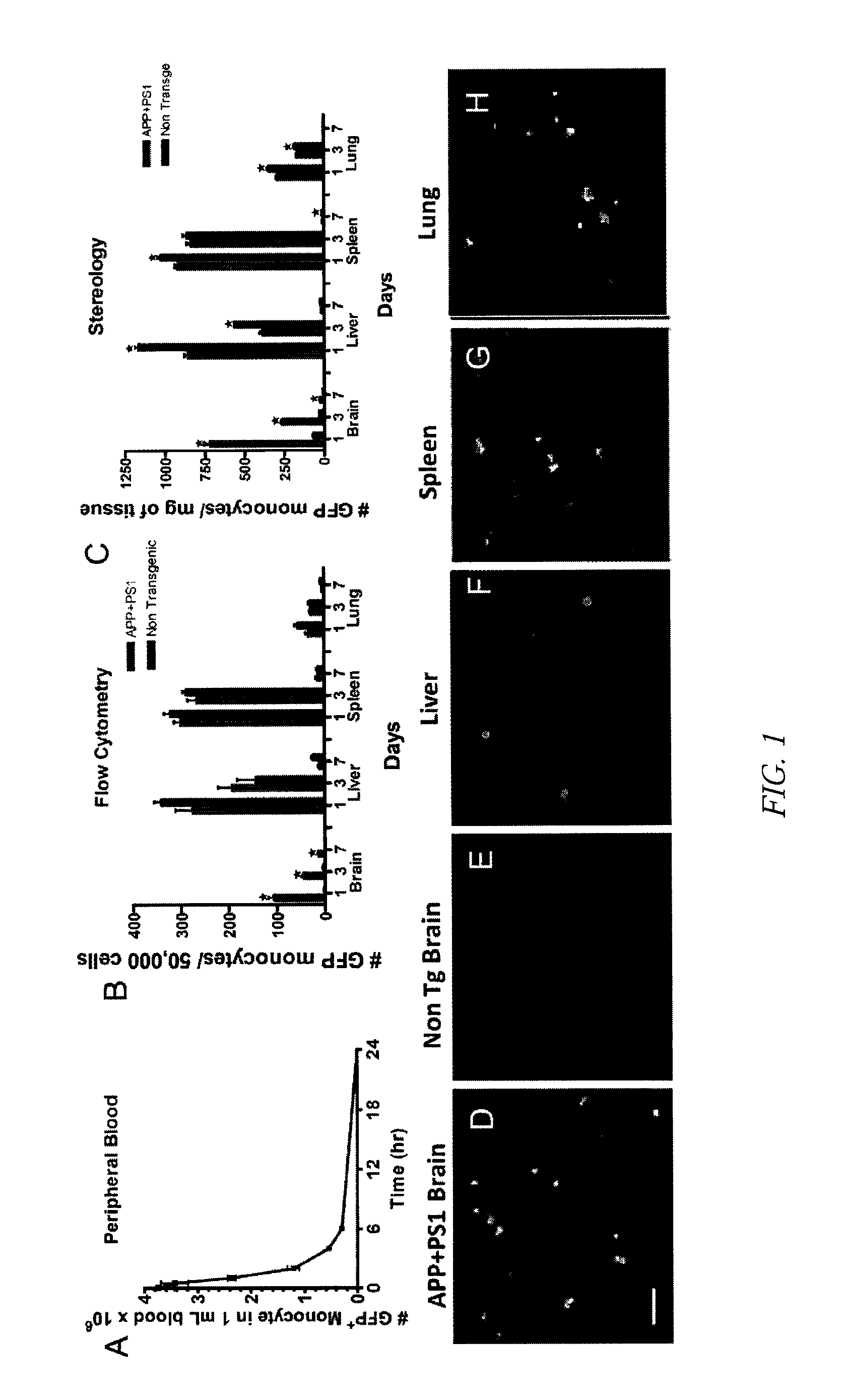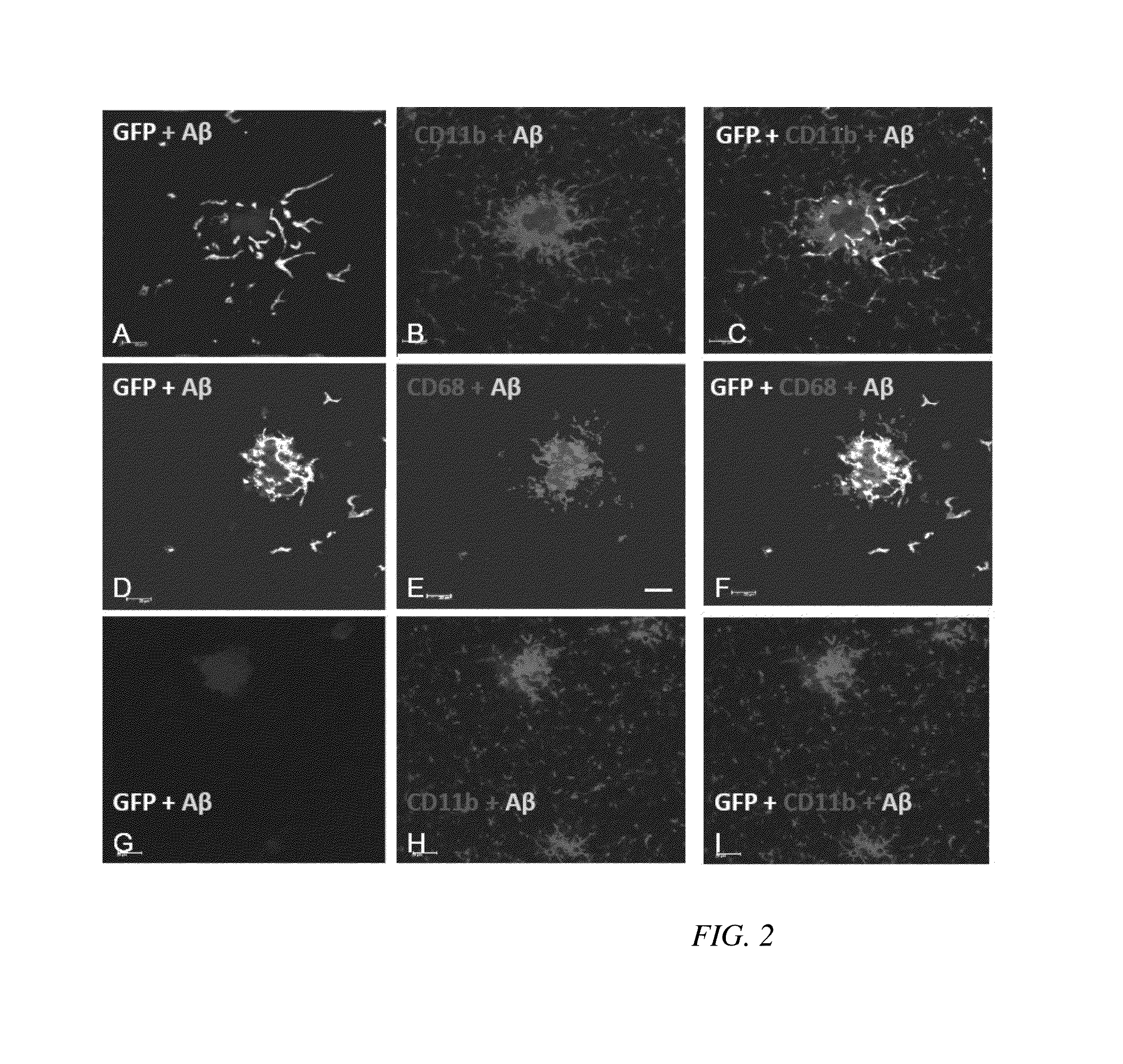Monocytes as a gene delivery vector for secreted proteins to treat Alzheimer'S disease
a gene delivery and alzheimer's disease technology, applied in the field of gene therapy, can solve the problems of exaggerating the true extent of monocyte infiltration, confounding the study of cns damage produced in the labeling of monocytes with bone marrow grafts, and challenging the problem of exploiting gene therapy
- Summary
- Abstract
- Description
- Claims
- Application Information
AI Technical Summary
Benefits of technology
Problems solved by technology
Method used
Image
Examples
examples
Mice
[0031]Double transgenic APP+PS1 mice that are a cross between the mAPP transgenic line Tg2576 (Hsiao, et al. 1996) and the mPS1 transgenic line 5.1 (Duff et al, 1996). This breeding produces both APP+PS1 mice and nontransgenic mice (littermates) used in this study. The GFP transgenic mouse model for bone marrow donors were from Jackson laboratory C57BL / 6-Tg(UBC-GFP)30Scha / J[Stock #004353]. These transgenic mice express the green fluorescent protein (GFP) under the direction of the human ubiquitin C promoter. Sixteen month old transgenic and non transgenic mice were used for the single injection time course study and 9 month old APP+PS1 mice were used for the two month multiple injection study. All mice were bred and maintained in the inventor's animal facility according to institutional guidelines.
Adoptive Transfer of Monocytes
[0032]Transgenic GFP mice were overdosed with pentobarbital. The femurs and tibias were removed aseptically and bone marrow was flushed from the bone usin...
PUM
| Property | Measurement | Unit |
|---|---|---|
| volume | aaaaa | aaaaa |
| half life | aaaaa | aaaaa |
| pH | aaaaa | aaaaa |
Abstract
Description
Claims
Application Information
 Login to View More
Login to View More - R&D
- Intellectual Property
- Life Sciences
- Materials
- Tech Scout
- Unparalleled Data Quality
- Higher Quality Content
- 60% Fewer Hallucinations
Browse by: Latest US Patents, China's latest patents, Technical Efficacy Thesaurus, Application Domain, Technology Topic, Popular Technical Reports.
© 2025 PatSnap. All rights reserved.Legal|Privacy policy|Modern Slavery Act Transparency Statement|Sitemap|About US| Contact US: help@patsnap.com



